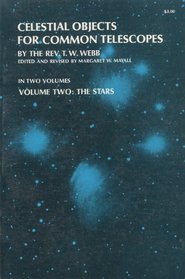Search -
Celestial Objects for Common Telescopes, Volume Two: The Stars
Celestial Objects for Common Telescopes Volume Two The Stars
Author:
Purchase of this book includes free trial access to www.million-books.com where you can read more than a million books for free. This is an OCR edition with typos. Excerpt from book: scratches, in object-glass or speculum; they merely obstruct a very little light. Actual performance is the only adequate test. The image should be neat and well... more »
Author:
Purchase of this book includes free trial access to www.million-books.com where you can read more than a million books for free. This is an OCR edition with typos. Excerpt from book: scratches, in object-glass or speculum; they merely obstruct a very little light. Actual performance is the only adequate test. The image should be neat and well... more »
ISBN-13: 9780486209180
ISBN-10: 0486209180
Pages: 351
Edition: 2nd
Rating: ?
ISBN-10: 0486209180
Pages: 351
Edition: 2nd
Rating: ?
0 stars, based on 0 rating
Genres:
- Science & Math >> Astronomy & Space Science >> Astronomy
- Science & Math >> Astronomy & Space Science >> Star-Gazing





